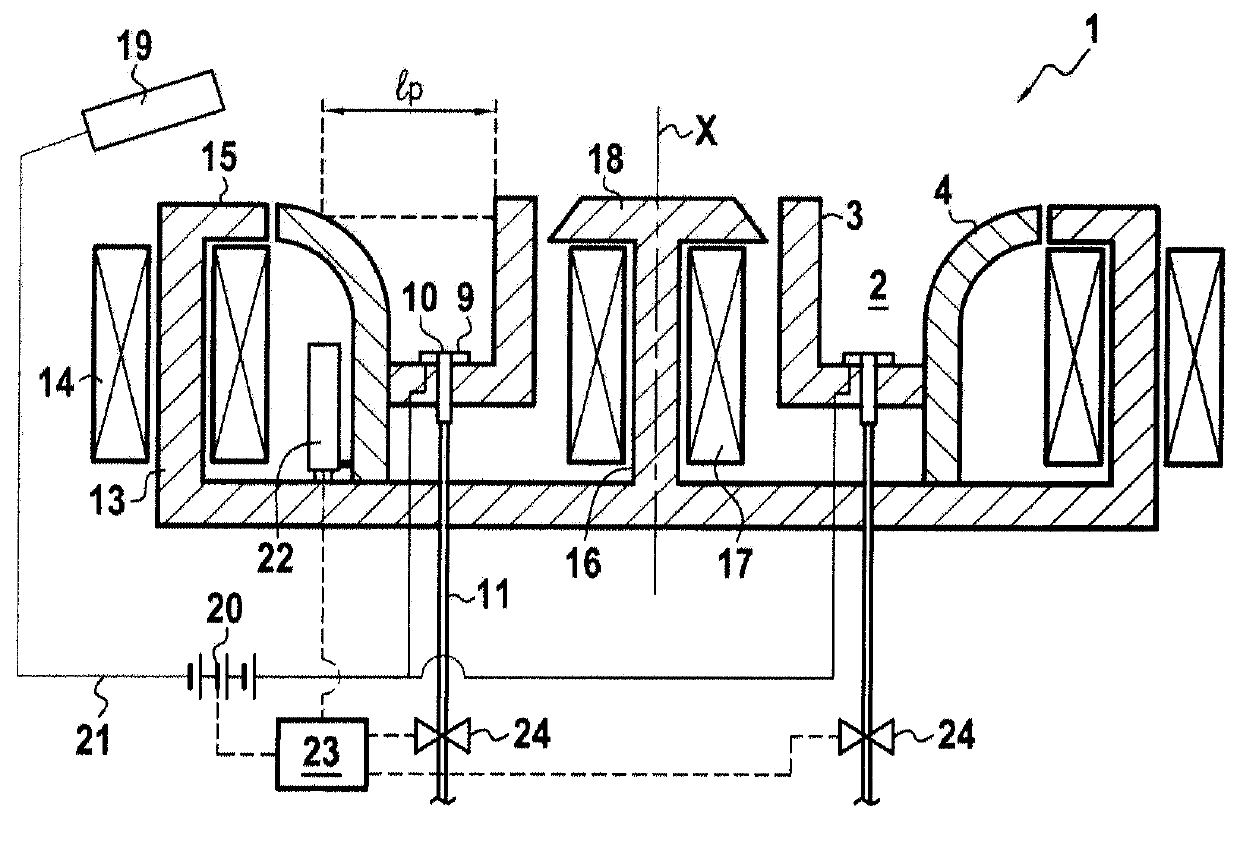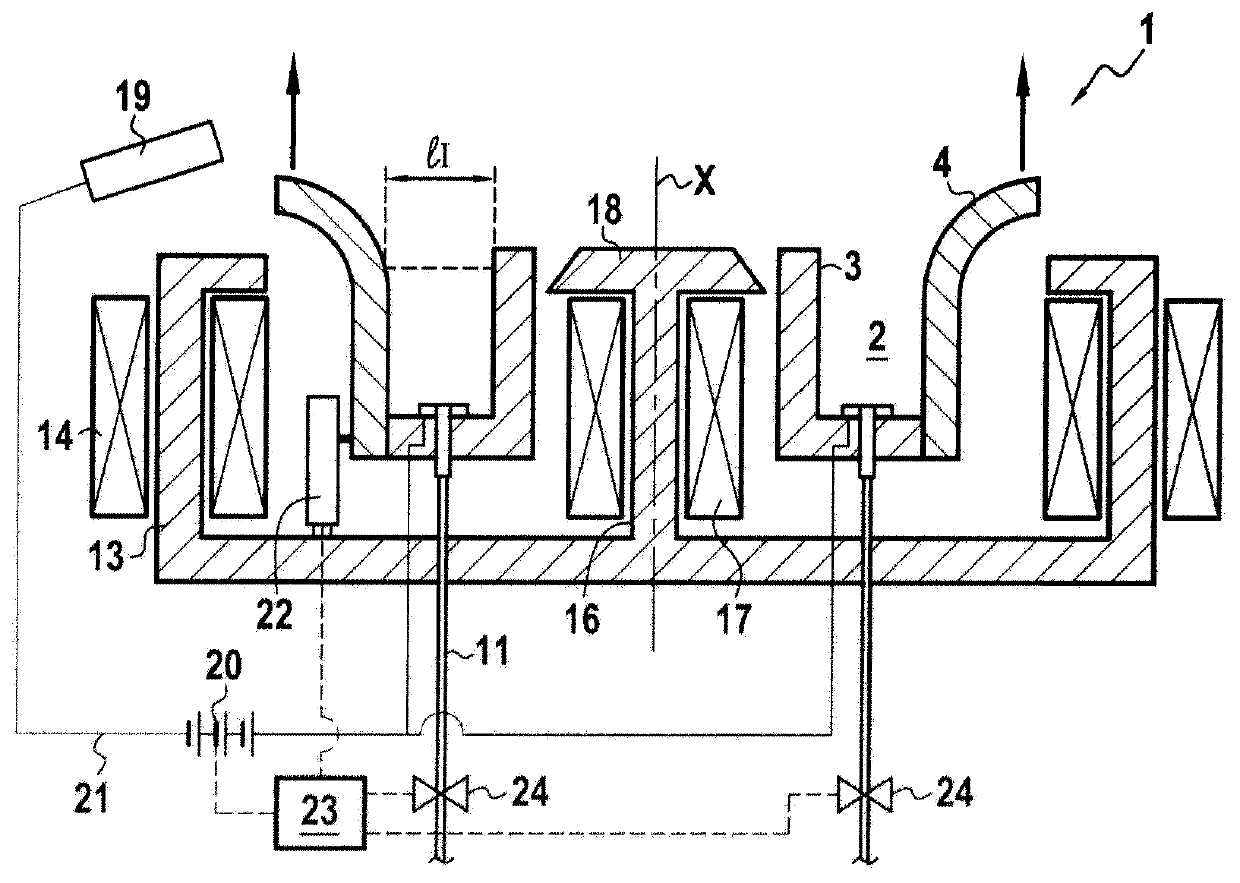Hall effect thruster
A Hall-effect, thruster technology, applied in aircraft, thrust reversers, machines/engines, etc., can solve the problem of not mentioning Hall-effect thrusters
- Summary
- Abstract
- Description
- Claims
- Application Information
AI Technical Summary
Problems solved by technology
Method used
Image
Examples
Embodiment Construction
[0023] Figure 1A and Figure 1B Two different positions of the same Hall effect thruster 1 in the first embodiment are shown. The impeller 1 has an annular channel 2 delimited by inner and outer walls 3 and 4 coaxial around a central axis X, these coaxial walls being made of ceramic material. The annular channel 2 has an open downstream end and a closed upstream end. At its upstream end, the annular channel 2 also has nozzles 10 for injecting propellant gas into the annular channel 2 . The nozzle 10 is connected to a source of propellant gas through an injection circuit 11 comprising a flow rate regulating device 24 . For example, these devices 24 may include pencil valves or thermo-capillaries, which are capillary tubes with heating means that can actively change their own temperature and thus the flow rate through them. Such a flow rate regulator can also be combined with a passive restrictor. The propellant gas may be xenon, which has the advantage of high molecular we...
PUM
 Login to View More
Login to View More Abstract
Description
Claims
Application Information
 Login to View More
Login to View More - R&D
- Intellectual Property
- Life Sciences
- Materials
- Tech Scout
- Unparalleled Data Quality
- Higher Quality Content
- 60% Fewer Hallucinations
Browse by: Latest US Patents, China's latest patents, Technical Efficacy Thesaurus, Application Domain, Technology Topic, Popular Technical Reports.
© 2025 PatSnap. All rights reserved.Legal|Privacy policy|Modern Slavery Act Transparency Statement|Sitemap|About US| Contact US: help@patsnap.com



